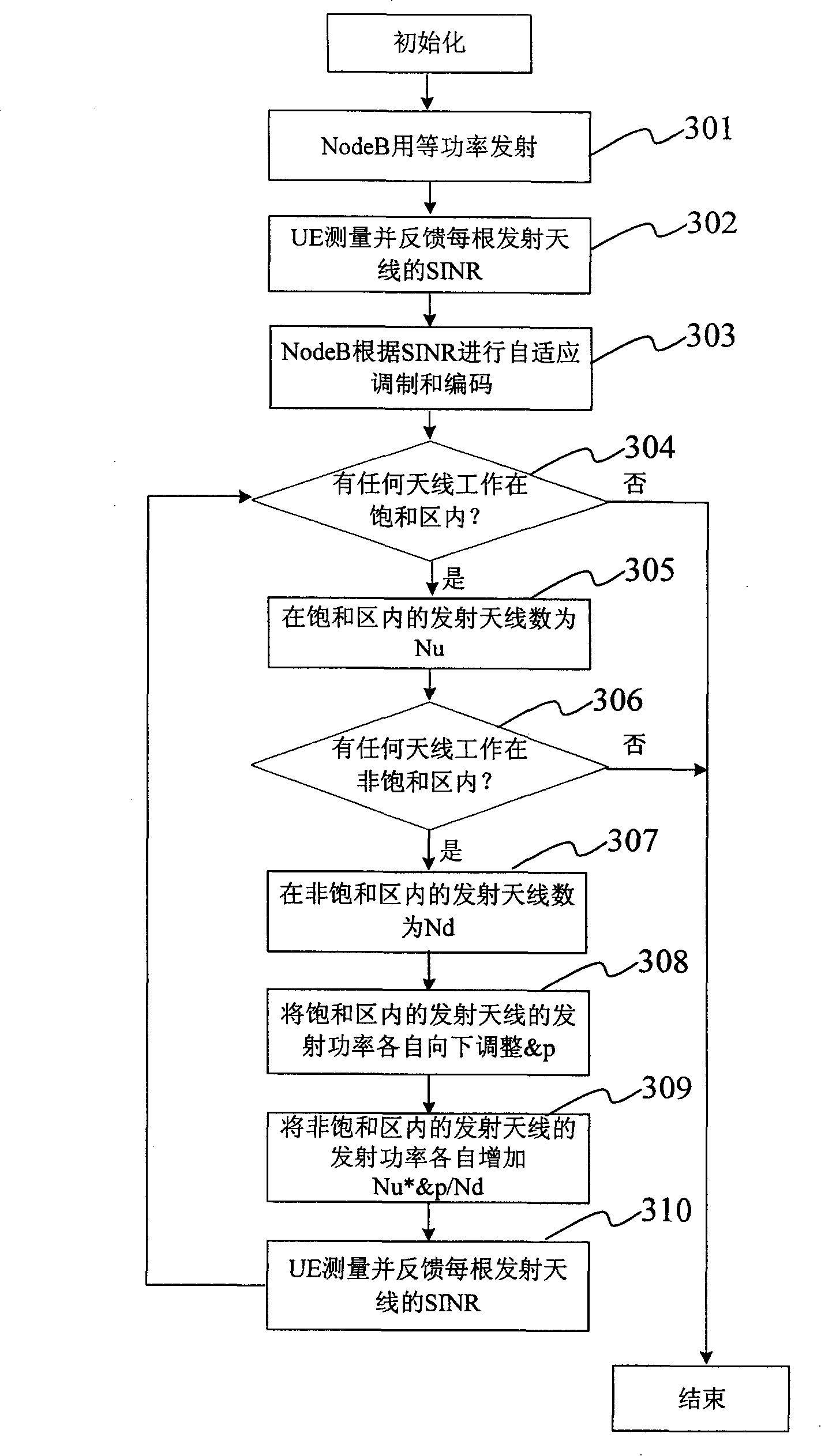An antenna rate control method and system
A control method and line rate technology, applied in the field of communication, can solve problems such as the inability to adjust the power of the transmitting antenna, and achieve the effect of reducing interference
- Summary
- Abstract
- Description
- Claims
- Application Information
AI Technical Summary
Problems solved by technology
Method used
Image
Examples
Embodiment Construction
[0032] On the basis of the existing PARC technology, the present invention proposes a per-antenna rate control technology for power allocation for different antennas. For the convenience of description, this technology can be abbreviated as P 2 ARC (Power Per-Antenna Rate Control). In the present invention, the base station allocates different transmitting powers on each transmitting antenna according to the feedback signal of the mobile station and the result of adaptive modulation and coding. Roughly speaking, the present invention allocates more transmit power to 16QAM modulated signals and less transmit power to QPSK modulated signals.
[0033] figure 1 It is a flow chart of the steps of the method of the present invention, as shown in the figure, the method of the present invention comprises the following steps:
[0034] Step 101, the base station obtains the SINR of different transmitting antennas according to the feedback information of the mobile station, and determi...
PUM
 Login to View More
Login to View More Abstract
Description
Claims
Application Information
 Login to View More
Login to View More - R&D
- Intellectual Property
- Life Sciences
- Materials
- Tech Scout
- Unparalleled Data Quality
- Higher Quality Content
- 60% Fewer Hallucinations
Browse by: Latest US Patents, China's latest patents, Technical Efficacy Thesaurus, Application Domain, Technology Topic, Popular Technical Reports.
© 2025 PatSnap. All rights reserved.Legal|Privacy policy|Modern Slavery Act Transparency Statement|Sitemap|About US| Contact US: help@patsnap.com



